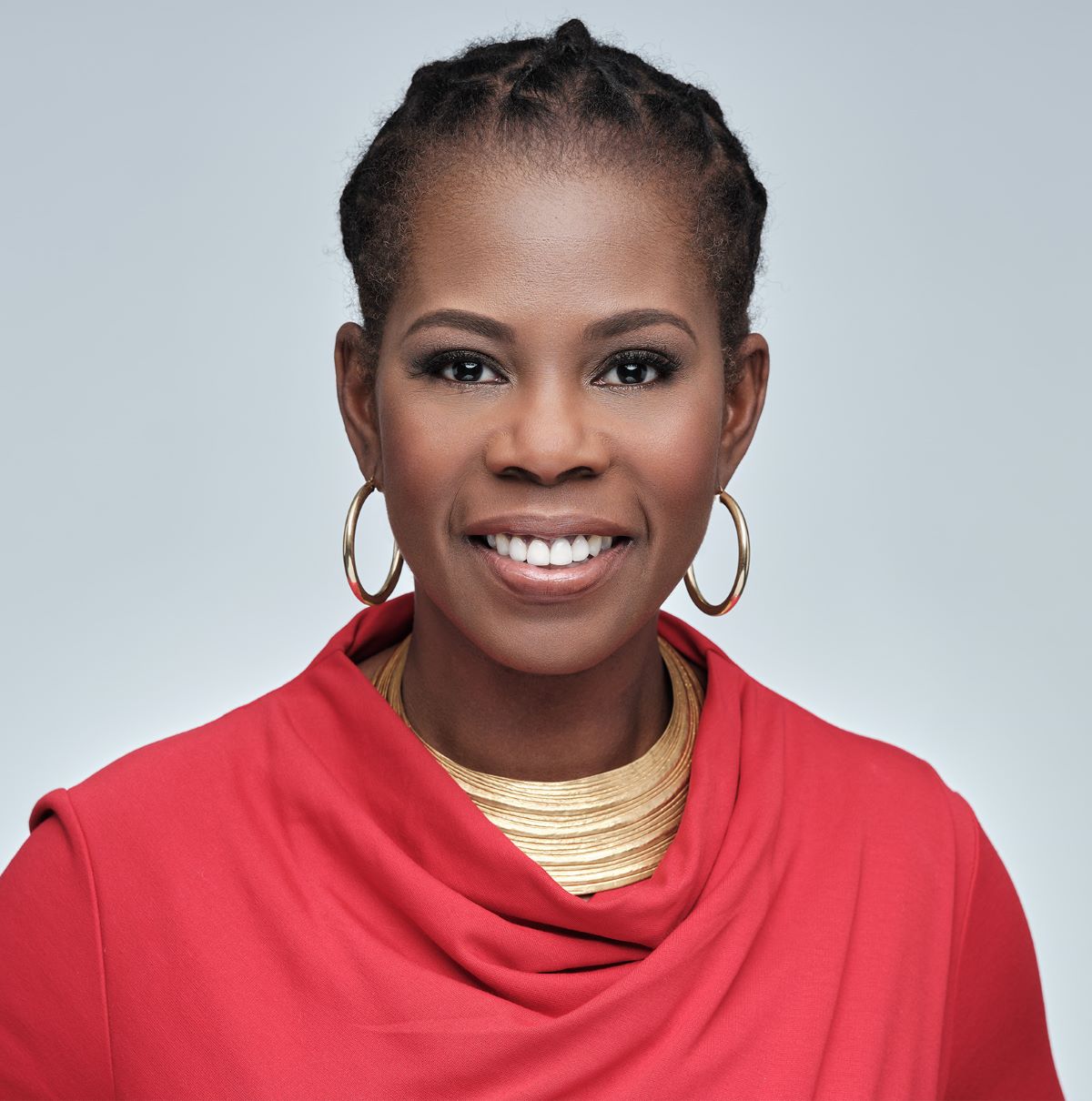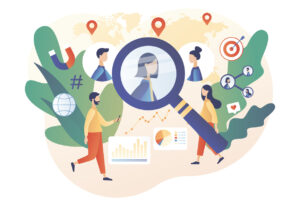New York Times HR chief shares the 3 relationships everyone needs at work
Jacqueline Welch offers nuggets of career wisdom, what’s ahead for the Times, and what wellness means to her.

Like many, Jacqueline Welch changed jobs in 2021. Unlike many, she wouldn’t describe her move as merely a job change.
“To be on the side of an institution that really is doing its best to uphold the public trust feels like a high calling,” says Welch of her role as head of HR and wellness at The New York Times. “Journalism is the only industry protected by the constitution. It doesn’t feel like a career anymore now, it feels like a calling, which at this age and stage in life is what I want from my work.”
Welch’s esteemed career has spanned Rock-Tenn Company, Turner Broadcasting System, and prior to the Times, Freddie Mac, a company whose mission of making home ownership possible was one Welch personally identified with.
“I remember my parents planning and saving for our very first home and the difference that made to us in every way that home ownership can make to a family. I say that to say that there was no pull and there was no push, except you get the call from ‘The Gray Lady’ and being a born and raised New Yorker, you just kind of go, ‘say that again?’”
Welch, Hall of Fame honoree in Ragan’s 2021 Top Women in Wellness and HR Awards, shared changes she plans to make at the Times, her best career advice and what she’s most proud of.

Jacqueline Welch
A memorable achievement
One of Welch’s biggest learning curves as an HR professional happened when she wasn’t working. She off-ramped for four years in between her time at Turner Broadcasting and Freddie Mac, and was the primary caregiver for her dad—who is now well—for the first two years.
“I spent a lot of time with my dad around sick and dying people, in addition to caregivers, and learned so much about both. What constitutes wellness as an idea? How do you support people who have someone to take care of? What are the offerings you give people to prepare for that stage in your life? So much of that experience formed how I think about my job.”
It influenced what happened when she ran into a woman crying in the ladies’ restroom at Freddie Mac, upset over her mother’s passing in India and wondering how she could fly there and back in just three days.
“She was doing the math to figure out how she could do something as human—in a milestone as an adult—as go bury her mother,” she says. “I just thought, I can fix that. This shouldn’t happen.”
Welch increased bereavement leave for Freddie Mac employees from three to 10 days. In some cultures, she explains, grieving is a process done in community and doesn’t fit into a three-day parameter.
She takes comfort in knowing that policy remains in place.
“Presumably, anybody working inside an organization that leads people is responsible for the humans, but human resources as a discipline is the only one with the mandate in the title,” she says. “If we can’t translate human experiences into tangible policies and programs, etc., then what are we really?”
What’s ahead at the Times
Welch’s goal is for employees to feel that they’re taken care of in all realms. To ensure that, she says, you must know who your employees are, offer the right benefits, and tell an integrated story.
The Times, she says, offers as good, and in some instances, better benefits than a lot of places. But Welch wants to ensure those benefits are tailored to employees.
“The New York Times has ample opportunity to really shake the tree on our benefits to make sure we’re offering the right ones given who our people are in their demographic profiles,” she says.
For example, the Times has a significant proportion of employees who are in age categories that would suggest that they likely have aging family members. “It’s great that we have a robust parental leave policy, and we should, but what’s the equivalent of that on the other end of the age spectrum?” she says.
The Times also has a significant number of young employees for whom tuition reimbursement and repayment are valuable, but what’s the equivalent of that on the other side beyond 401k or flexible spending accounts? “What do we do for them? Can we do something by way of support for estate planning for employees of a certain age who are looking at those things?”
“There are all kinds of ways to look at demographic profiles and offer benefits according to who works for you and not what’s sort of standard issue, so directionally that’s where we’re headed,” she says.
Wellness is also top of mind.
“I do think that the Times, not unlike many places, is really starting to reckon with [the fact that] wellness has a bunch of ways that it shows up, and I think the winners in the marketplace will be the ones who can integrate the ways in which we think about wellness holistically.”
Welch looks at the intersection of physical, mental and financial health. “Those are things that we have to think about and focus on, and draw the connectivity,” she says.
“If your finances are subpar and we’re not doing all we can to support you in managing your finances, likely that’s going to have an adverse impact on your mental wellness.”
Don’t silo benefits, she says. For instance, include a financial planning course inside an Employee Assistance Program, an offering usually perceived as solely for mental or physical health. Or include elder care or disability insurance within the financial portion of your benefits package.
And the sage advice she shares with every HR team she’s led? “Avoid the shiny objects.” A perk or benefit might sound fantastic, but ask yourself, “Does it serve the humans who actually work here? Otherwise, it’s not worth doing.”
If there’s a choice between pet insurance and more bereavement leave, she’ll err on the side of more bereavement leave. “I have the moral obligation and the responsibility to make sure that the things I’m asking for can most positively impact the most people.”
When you start positioning your arguments that way, people take your request seriously. They know you’re not bringing forth a benefit because it’s a new shiny object.
“This is where it’s crucial to really do all you can to understand who works here so that you’ve got good things that you want to bring forward,” she says.
Three critical relationships
Welch’s final piece of advice applies to anyone in any field.
“I have not worked anywhere where relationships weren’t key,” she says. “Relationships are the great multiplier and propellant of successful careers.”
There are three relationships that you should have to propel in your career: a mentor, coach and sponsor.
“There’s a tendency to use all three interchangeably, and they’re quite different,” she says.
The mentor: They speak with you. They don’t tell you what to do but add to your thinking. For example, when Welch was deciding to leave Atlanta to come to Northern Virginia to work for Freddie Mac, one of her mentors asked, “What about your children? What does this mean for your husband’s career? You’re very close to your parents and they’re getting older. Are you going to be OK with not being the same geography as them?”
“He never gave me any answers, never gave me any advice so much as he opened the aperture of my thinking,” Welch says.
The coach: They are directive by nature. The don’t ask you anything—they tell you what to do.
“Anytime I join an organization, I find someone who can walk me through the mechanics of the economic model for making money,” she says. “I just need to know, how do we make money around here so that I’m in sync when I think about what my agenda ought to be.”
The sponsor: The mentor talks with you, and the coach talks at you. “The sponsor talks about you when you’re not in a room and can’t talk on your own behalf. That’s the advocate,” she says.
It’s also the most important.
“The research shows that women and minorities are over-mentored and over-coached. Everybody wants to tell us what we should be thinking about, and everybody wants to tell us what to do, and that’s important to get those inputs, but what really puts the icing on the cake in terms of the propellant nature of relationships is a sponsor.”
You can ask others to be a mentor or a coach. But how about that elusive sponsor?
“If you’ve got coaches and mentors, and you’re doing good work that you’re not afraid or timid to talk about, that’s how you get to the sponsor,” she says. “Get those foundations in place first.”
“Every sponsor I’ve ever had has sought me out as a result of those things—the good work, the ability to articulate the work and the impact. And coaches and mentors who were willing to help me think through how I position myself to get that sponsor to notice me and what to advocate on my behalf,” Welch says.
Readers, have you fostered and nurtured these relationships in your career? Have you paid it forward?






